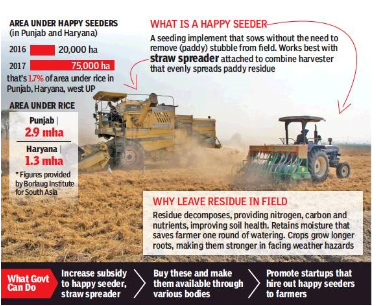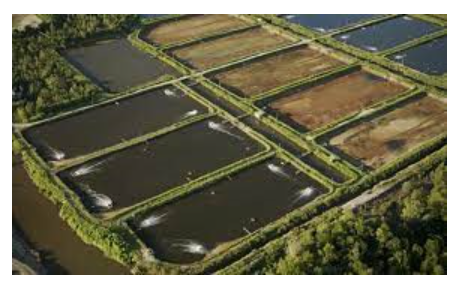Monday, 13th November 2023
India-UK FTA - Edukemy Current Affairs
In News: The current focus in the India-United Kingdom relationship is on negotiating a Free Trade Agreement (FTA), particularly noted ahead of discussions preceding a visit by the External Affairs Minister to UK.

How have trade relations between India and the UK been?
- From 2007 to 2019, India-UK trade more than doubled.
- By the end of 2022, India became the UK's twelfth largest trading partner, contributing to 2.0% of the UK's total trade.
- In goods, it ranked thirteenth, while in services, it was the tenth largest partner.
- In the fiscal year 2022-23, bilateral trade soared by 16%, reaching USD 20.36 billion, showcasing the growing economic ties between the two nations.
Context behind the India-UK Free Trade Agreement
- In 2022, formal negotiations for a Free Trade Agreement (FTA) were initiated between India and the UK.
- Prior to this, both nations were exploring the possibility of an interim free trade area, aiming to reduce tariffs on a wide range of items.
- Mutual consensus led to the adoption of an early harvest scheme, involving a limited trade agreement designed to lower tariffs on specific goods and streamline rules for select services.
- Notably, there was a deliberate effort to steer clear of "sensitive issues" and concentrate on areas where the two countries could complement each other effectively.
- Within the scope of trade discussions, the agriculture and dairy sectors emerged as particularly sensitive for India.
- Additionally, a shared objective was established to double the trade volume between India and the United Kingdom by the year 2030.
Issues causing contention in the negotiations
- India is adamant about safeguarding the production of life-saving generics in IPR negotiations.
- India, lacking firm domestic laws in digital trade and data protection, is cautious about making commitments in this area.
- Rules of Origin (ROO), determining a product's national source, is a contentious issue.
- India insists on strict rules to prevent unfair advantages from third countries.
- In a first, labour and environmental commitments are under consideration.
- India seeks terms that won't pose additional challenges to its progress, while the UK pushes for stringent IPRs, free data flow, liberal ROOs, and commitments in labour and environmental areas.
Utility of FTA
- Trade agreements with the UK have the potential to boost exports in job-intensive sectors like textiles, leather goods, and footwear, as well as marine products.
- The Free Trade Agreement (FTA) aims to enhance certainty and transparency, especially in service sectors like IT/ITES, nursing, education, healthcare (including AYUSH), and audio-visual services.
- Following the exit from the Regional Comprehensive Economic Partnership (RCEP) in 2019, India is shifting focus to trade agreements with the US, the European Union, and the UK for diversified sourcing.
- Beyond trade, strengthening ties with the UK holds strategic significance, given its position as a permanent member of the UN Security Council.
- This collaboration could potentially yield support on global issues, including the Ladakh standoff with China and India's claim for a permanent seat at the UN Security Council.
The Path Ahead
- The ongoing talks regarding the India-UK Free Trade Agreement carry substantial weight in shaping India's trade connections.
- The primary emphasis lies in tackling challenging issues like intellectual property rights, global value chains, digital trade, and rules of origin.
- The deliberate and gradual pace of negotiations underscores India's dedication to achieving a comprehensive deal that safeguards its interests.
- The results of these discussions will profoundly influence India's forthcoming trade agreements, underscoring the need for meticulous consideration and strategic decision-making.
|
UPSC Previous Year Questions Prelims (2018) Q. Consider the following countries:
Which of the above are among the ‘free-trade partners’ of ASEAN? (a) 1, 2, 4 and 5 Ans: (c) |
Source: TH
Governor Cannot Withhold Approval for State Bills
In News: The Supreme Court said that a Governor cannot delay approval of crucial Bills passed by a State Legislature, especially when it received overwhelming majority support from elected representatives.
What is the matter at hand?
- The Punjab government filed a writ petition in the Supreme Court, asserting that the Governor had withheld key bills passed during a special sitting of the Budget Session of the Vidhan Sabha.
- The Governor's refusal to pass the bills was based on the argument that the special Assembly sitting in June, where the bills were passed, was deemed "patently illegal" as the Speaker of the Punjab Assembly adjourned the Budget Session without proroguing it, distinguishing between adjournment sine die and prorogation.
Primary findings provided by the Supreme Court
- In a parliamentary democracy, actual authority resides in the elected representatives of the people.
- The court clarified that the Governor has the options of assenting to, withholding assent and returning the Bills for reconsideration, or referring them to the President, but cannot delay Bills passed by a State Legislature.
- Each House of the Legislature has the right to regulate its own proceedings.
- The Speaker, acknowledged as the guardian of the House's privilege and a constitutionally recognized authority representing the House, acted within their jurisdiction in adjourning the House sine die.
- Yet, the Speaker's authority to adjourn sine die cannot be used to keep the House in perpetual session.
Significant constitutional and legislative authorities held by the Governor concerning the state legislature
- The governor holds the authority to address, send messages, summon, prorogue, and dissolve the State Legislature.
- These powers are formal, and the governor's exercise of these powers must align with the advice of the Council of Ministers led by the chief minister.
- Article 200 stipulates that the Governor can either assent to, withhold assent, or reserve the Bill for consideration by the President.
- According to Article 201, when a Governor reserves a Bill for the President's consideration, the President must declare either assent or withhold assent.
- However, this provision does not apply to Money Bills, as defined in Article 110 of the Indian Constitution, which pertain to financial matters like taxation and public expenditure.
What unique authorities does the Speaker of the State Legislature possess?
- The Governor has the authority to adjourn the House or suspend the meeting if one-tenth of the total strength (quorum) is absent.
- Regarding Money Bills, the Governor determines their classification, and their decision on this matter is conclusive. (Money bills are introduced only with the prior approval of the Governor.)
|
UPSC Previous Year Questions Prelims (2018) Q. Consider the following statements:
Which of the statements given above is/are correct? (a) 1 only Ans: (C) Prelims (2014) Q. Which of the following are the discretionary powers given to the Governor of a State?
Select the correct answer using the code given below: (a) 1 and 2 only Ans: (b) Prelims (2013) Q. Which one of the following statements is correct? (a) In India, the same person cannot be appointed as Governor for two or more States at the same time (b) The Judges of the High Court of the States in India are appointed by the Governor of the State just as the Judges of the Supreme Court are appointed by the President (c) No procedure has been laid down in the Constitution of India for the removal of a Governor from his/her post (d) In the case of a Union Territory having a legislative setup, the Chief Minister is appointed by the Lt. Governor on the basis of majority support Ans: (c) Mains (2018) Q. Whether the Supreme Court Judgment (July 2018) can settle the political tussle between the Lt. Governor and elected government of Delhi? Examine. Mains (2016) Q. Discuss the essentials of the 69th Constitutional Amendment Act and anomalies, if any, that have led to recent reported conflicts between the elected representatives and the institution of the Lieutenant Governor in the administration of Delhi. Do you think that this will give rise to a new trend in the functioning of the Indian federal politics? |
Source: TH
Two state solution - Edukemy Current Affairs
In News: India and the U.S. express backing for Israel, urging the prompt release of hostages, they also advocated for "humanitarian pauses" in the conflict.
How can the Jewish-Arab conflict be resolved?
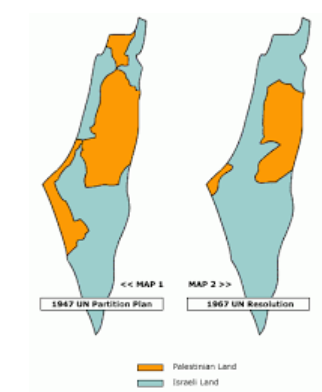
- A resolution to the Jewish-Arab conflict could involve partitioning the land between the Jordan River and the Mediterranean Sea into two distinct nations.
- Initially, Jews embraced this notion, while Arabs opposed it.
- Nevertheless, there is currently backing for a two-state solution from both the Arab world and Western countries.
- Despite this, Israel appears reluctant to establish a self-governing Palestinian state in the West Bank and Gaza, with East Jerusalem as its capital.
Why Israel is reluctant towards Two-state solution?
- Worries about Escalating Attacks: The Israeli-Palestinian conflict involves numerous stakeholders, but the pivotal ones are the Palestinian and Israeli populations, with the Israeli public as the central participant.
- Therefore, the critical question revolves around whether recent attacks by Hamas will influence Israeli support for a Palestinian state.
- While some anticipate a positive shift, others worry that a two-state solution might facilitate more effective Palestinian attacks.
- Hamas' Stance: Hamas rejects the concept of an Israeli nation, while Israel is apprehensive that peace may lead to the establishment of a single Palestinian state excluding Israel.
- Extremist Israeli Factions: The challenge lies in Palestinians convincing Israeli voters that they can coexist peacefully with Jews under their own state. Some radical Israelis have consistently opposed the idea of Palestinians having their own state.
Way Forward
- Living under Israeli occupation, Palestinians have endured significant suffering, leading some to resort to violence to draw attention to their plight.
- Unfortunately, this cycle of violence tends to diminish the likelihood of Israelis ending the occupation.
- Moreover, recent terror attacks by Hamas have heightened Israeli suspicions, perceiving a sovereign Palestinian state as a threat to Israel's existence. Consequently, to secure their own state, Palestinians face the formidable challenge of convincing Israelis that coexistence is possible.
Source: TH
India's Energy Conservation Building Code, 2017
In News: In its World Energy Outlook 2023 report, the International Energy Agency (IEA) has emphasized that India stands out from other developing economies due to its Energy Conservation Building Code (ECBC), 2017.
About IEA
- The International Energy Agency (IEA), established in 1974 in Paris, France, is an autonomous intergovernmental organization focusing on energy policies related to economic development, energy security, and environmental protection (known as the 3 E's).
- India, an Associate Member since March 2017, recently entered into a Strategic Partnership Agreement with the IEA to enhance collaboration in global energy security, stability, and sustainability.
- The IEA releases the annual World Energy Outlook Report, and it operates the Clean Coal Centre, dedicated to providing independent information and analysis on making coal a cleaner energy source aligned with UN Sustainable Development Goals.
About India's Energy Conservation Building Code, 2017
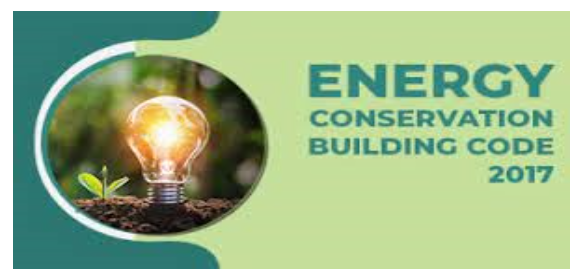
- The Energy Conservation Building Code (ECBC) was initially released by the Ministry of Power's Bureau of Energy Efficiency (BEE) in 2007, with an update in 2017.
- Currently, 23 states have enforced ECBC compliance, while states like Maharashtra and Gujarat are still in the rule-drafting process.
- ECBC sets energy standards for commercial buildings, aiming for 25-50% energy savings.
- Applicable to buildings with a connected load of 100 kW or more, it focuses on six key components, including envelope, lighting, HVAC systems, and electrical power.
- Implementation is crucial as buildings contribute to 30% of India's electricity consumption, projected to reach 50% by 2042.
- The 2017 update emphasizes renewable energy, ease of compliance, and passive design strategies, aligning with global sustainability trends.
Government efforts to encourage energy conservation and efficiency
- The Perform Achieve and Trade Scheme (PAT) is a market-based mechanism aimed at improving energy efficiency in energy-intensive industries through the certification of energy savings that can be traded.
- It is a component of the National Mission for Enhanced Energy Efficiency (NMEEE) under the National Action Plan on Climate Change (NAPCC).
- Launched in 2006, the scheme covers various appliances and equipment, including Room Air Conditioners, Ceiling Fans, LED Lamps, and more.
- Additionally, Demand Side Management (DSM) involves measures affecting the demand or customer side of the electric meter.
Way Forward
- The IEA acknowledges that India is among the select developing nations with building codes for both commercial and residential buildings, and their consistent enforcement holds the potential for substantial energy savings in the sector.
- Additionally, in 2022, India enacted the Energy Conservation (Amendment) Act, further broadening the scope of building codes in the country.
- This amendment facilitates the transformation of the Energy Conservation Building Code (ECBC) into the Energy Conservation and Sustainability Building Code, encompassing measures related to embedded carbon, net-zero emissions, materials and resource efficiency, the adoption of clean energy, and circularity.
Source: IE
Odd-even scheme - Edukemy Current Affairs
In News: The Delhi government informed the SC that the odd-even scheme will result in the removal of 10 lakh vehicles from the capital's roads, alleviating congestion and pollution during the winter.
About Odd-even scheme
- Implemented by the Delhi government in 2016, the odd-even program permits private vehicles to operate on designated days based on the last digit of their license plate number.
- Vehicles with even digits are allowed on even dates, while those with odd digits are permitted on odd dates.
Impact of Odd-even scheme on Delhi
- The odd-even program, implemented by the Delhi government in 2016, aimed to reduce the number of vehicles on the road and subsequently lower emissions.
- However, experts argue that it is not a consistent solution, as the reduction in vehicles is not always substantial, and emissions may not necessarily decrease pollutant levels due to factors like wind speed.
- The impact of the scheme varies across areas, with some experiencing reductions, while others do not or only temporarily.
- Research is inconclusive regarding the impact on health, and even a 20% reduction in PM2.5 levels can be harmful if above 500.
- Long-term exposure to pollution poses risks to various health issues.
- Studies indicate a small decrease in particulate matter during the odd-even scheme, ranging from 5 to 10%, with variations observed across different areas and times of the day.
Conclusion
Studies suggest that while the odd-even policy in Delhi may have a modest impact on decreasing vehicle traffic and emissions, it falls short of significantly addressing pollution. To effectively tackle the issue, there is a need for collaboration between the Delhi government and the state governments of Haryana and Punjab to implement long-term solutions.
Source: TH
Dal Lake - Edukemy Current Affairs
In News: Recently, a significant fire erupted in the tourist hub of Dal Lake in Srinagar, causing the destruction of property valued at crores of rupees.
About Dal Lake
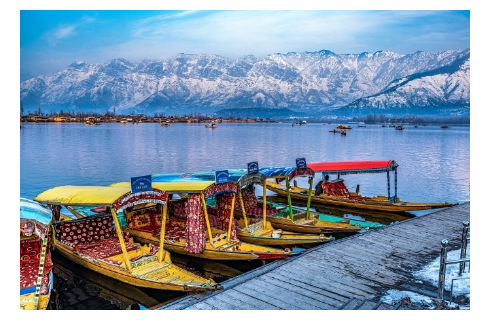
- Dal is a lake situated in Srinagar, the capital of the Union Territory of Jammu and Kashmir.
- Despite the term "Dal" meaning lake in Kashmiri it plays a vital role in tourism and recreation, often referred to as the "Jewel in the crown of Kashmir" or "Srinagar's Jewel."
- Apart from its scenic importance, Dal Lake serves as a crucial resource for commercial activities like fishing and water plant harvesting.
- Covering an area of 18 square kilometres, it is a part of a natural wetland featuring floating gardens called "Raad" in Kashmiri, showcasing lotus flowers during July and August.
- The lake is divided by causeways into four basins: Gagribal, Lokut Dal, Bod Dal, and Nagin.
- Lokut-dal and Bod-dal each house an island in the centre known as Rup Lank (or Char Chinari) and Sona Lank, respectively.
- Dal Lake is closely associated with houseboats (Shikaras), offering accommodation to tourists in Srinagar.
Source: TH
White-Cheeked Macaque - Edukemy Current Affairs
In News: Scientists conducting research on the White-Cheeked Macaque (Macaca leucogenys) were compelled to retract a paper due to restrictions on mentioning Arunachal Pradesh as the sampling site.
About White-Cheeked Macaque

- The White Cheeked Macaque is distinguished by its white cheeks, long and thick neck hair, and a lengthier tail compared to other Macaque species.
- It holds the distinction of being the most recent mammal discovery in Southeast Asia.
- Coexisting in the same biodiversity hotspot in the eastern Himalayas as the Arunachal Macaque (Macaca munzala), Assamese Macaque (Macaca assamensis), and Rhesus Macaque (Macaca mulatta)
- The White Cheeked Macaque faces potential threats such as hunting for consumption by locals and habitat degradation due to urbanization and infrastructure development.
- Notably, this species is not currently protected under the Wildlife Protection Act of India, as its existence in India was not previously known.
Source: TH
Functional Foods - Edukemy Current Affairs
In News: Health benefits of functional foods are getting the limelight they deserve
What are Functional Foods?
- Functional foods are foods that have been fortified, enriched, or enhanced to offer health benefits beyond those provided by essential nutrients like vitamins and minerals.
- When incorporated into a diverse diet regularly, these foods contribute to optimal health and aid in minimizing the risk of diseases.
- Examples of functional foods encompass not only conventional items like grains, fruits, vegetables, and nuts but also modified options like yogurt, cereals, and orange juice.
Functional foods contribution to addressing malnutrition and the challenges faced by Indian farmers
- Malnutrition remains a significant challenge in India, with 44% of children under 5 being underweight, and high rates of anaemia among infants and married women.
- Functional foods, enriched with essential nutrients and beneficial substances, have a high nutritional value, aiding in preventing malnutrition and diet-related chronic diseases.
- These foods, rich in fibres, antioxidants, and micronutrient enhancers, contribute to the overall well-being of the population, potentially boosting farmers' income and promoting food security through sustainable processing and marketing.
The Path Ahead
- To combat rural poverty and malnutrition, it is crucial to enhance connections between agriculture, nutrition, and food processing.
- This involves raising awareness of functional foods, transforming food businesses into value-added nutrition ventures, and providing technology and training to Farmers' Producer Organizations (FPOs) engaged in functional food production.
Source: TH
Pusa-2090 - Edukemy Current Affairs
In News: Pusa-2090 rice variety can be a good alternative to the problematic long-duration Pusa-44 variety in curbing stubble burning.
About Pusa-44 and Pusa-2090
- Pusa-44
- a long-duration paddy variety developed by the Indian Agricultural Research Institute (IARI), has been linked to stubble burning issues.
- With a growth cycle of 155-160 days, it matures late in October, leaving a limited timeframe for field preparation for the subsequent crop.
- To cope with time constraints, farmers often resort to stubble burning, leading to significant environmental consequences.
- Despite its extended duration, the high-yielding characteristics of Pusa-44, averaging 35-36 quintals per acre, contribute to its popularity among farmers.
- Pusa-2090
- IARI has introduced Pusa-2090, an enhanced version developed through a cross between Pusa-44 and CB-501, an early-maturing Japonica rice line.
- With a shorter maturation period of 120-125 days and comparable yields, Pusa-2090 effectively addresses the issue of stubble burning.
- Combining the high-yield characteristics of Pusa-44 with the quicker maturation cycle of CB-501, it emerges as a promising alternative.
- Following testing at the All-India Coordinated Rice Improvement Project, Pusa-2090 has been earmarked for cultivation in regions like Delhi and Odisha, with positive yield results reported by farmers in the test regions.
|
UPSC Previous Year Questions Prelims (2012) Q. Consider the following agricultural practices:
In the context of global climate change, which of the above helps/help in carbon sequestration/storage in the soil? (a) 1 and 2 only Ans: (b) |
Source: IE
Tuvalu - Edukemy Current Affairs
In News: Australia has extended refuge to the citizens of Tuvalu, a small Pacific Island nation facing the peril of rising sea levels caused by climate change.
About Tuvalu

- Tuvalu, a picturesque island country in the Pacific Ocean, faces the threat of disappearing due to rising sea levels and coastal erosion, attributed to climate change.
- Tuvalu, settled by Polynesians over 3000 years ago, maintains a strong cultural identity with Tuvaluan as the official language.
- The economy relies on fishing and remittances, and Tuvalu actively participates in global forums advocating for environmental issues.
- Governed as a parliamentary democracy with limited natural resources, Tuvalu faces economic challenges.
- Despite potential in eco-tourism, its remote location poses obstacles.
- The nation emphasizes cultural preservation and engages in international relations, particularly addressing climate change concerns.
Source: TOI
Overhauling the criminal justice system
In News: Three Bills have been introduced by the government to replace the foundational laws that underpin the criminal justice system.
About criminal justice system
- The criminal justice system comprises laws, procedures, and institutions designed to prevent, detect, prosecute, and penalize crimes, while safeguarding the rights and safety of individuals.
- This includes entities such as police forces, judicial institutions, legislative bodies, and supportive organizations like forensic and investigation agencies.
Proposed Changes in Legislation
- Bhartiya Nyaya Sanhita Bill, 2023
- Defines terrorism and related offenses.
- Repeals the offense of sedition.
- Prescribes capital punishment for mob lynching.
- Proposes 10 years imprisonment for deceptive sexual intercourse.
- Introduces community service as a punishment.
- Sets a maximum limit of 180 days for filing charge sheets.
- Bhartiya Nagarik Suraksha Sanhita Bill, 2023
- Promotes the use of technology in legal proceedings.
- Mandates video-recording of statements in sexual violence cases.
- Requires police to inform about complaint status in 90 days.
- Restructures Section 41A of CrPC for arrest approvals.
- Involves victims in case withdrawals.
- Allows trials in absentia for absconding criminals.
- Empowers magistrates with electronic record cognizance.
- Sets timelines for filing mercy petitions in death sentences.
- Bhartiya Sakshya Bill, 2023
- Defines electronic evidence and outlines admissibility criteria.
- Specifies provisions for DNA evidence admissibility.
- Recognizes expert opinions as valid evidence.
- Establishes the presumption of innocence as a fundamental principle in the criminal justice system.
Challenges in India’s current criminal justice system
- Pendency of Cases
- Over 4.7 crore cases pending, causing delays and eroding trust.
- Violation of the right to a speedy trial.
- Lack of Resources and Infrastructure
- Inadequate funding, personnel, and facilities.
- Shortage of judges, prosecutors, police, and legal aid lawyers.
- Poor Quality of Investigation and Prosecution
- Ineffective, biased, and non-professional investigations.
- Influence from political interference, corruption, and accountability issues.
- Human Rights Violations
- Accusations of human rights abuses, including torture, extrajudicial killings, false arrests, and unfair trials.
- Outdated Laws and Procedures
- Legal framework from 1860 not addressing modern crimes like cybercrime and terrorism.
- Public Perception
- Unfavourable police-public relations due to perceptions of corruption, inefficiency, and unresponsiveness.
Utility of current reforms
- Removal of Section 124A to address misuse against dissenters and government critics.
- Inclusion of terrorism, corruption, mob lynching, and organized crime.
- Extension of victim and offender categories to include men, women, and transgenders.
- Enhanced use of electronic evidence and forensics throughout the legal process.
- Ability to file police complaints at any station, irrespective of the crime location.
- Ensuring effective protection of citizens' constitutional rights, including the right to life, liberty, dignity, privacy, and a fair trial.
Loopholes in current reforms
- The proposed bills, developed by the Criminal Law Reforms Committee in 2020, face criticism for lacking consultation and transparency, potentially violating human rights, and exhibiting inconsistency.
- The absence of representation from key stakeholders and the lack of public disclosure for wider feedback raise concerns.
- Specific provisions, such as the introduction of vague terms and broad offenses, are highlighted for their potential impact on human rights, including free speech suppression.
- The bills are also criticized for inconsistencies between themselves and existing laws, raising questions about coherence and clarity in the proposed legal framework.
Way Forward
- Broad Consultation: Engage all stakeholders, including the public, for diverse perspectives before implementing reforms.
- Human Rights Protection: Clearly define and narrow vague terms, explicitly incorporating human rights principles to prevent potential misuse.
- Legal Framework Consistency: Ensure coherence across proposed bills and existing laws for a comprehensive legal structure.
- Technology Integration: Implement technology for evidence collection, online proceedings, and video-recorded statements for faster trials and transparency.
- Capacity Building: Invest in training, recruitment, and infrastructure for law enforcement, judiciary, and legal aid services to enhance efficiency.
- Restorative Justice: Adopt restorative justice principles to address crime root causes, reduce recidivism, and provide closure to victims.
- Public Awareness: Conduct awareness campaigns to educate the public about their rights and responsibilities within the criminal justice system for improved police-public relations.
|
UPSC Previous Year Questions Prelims (2008) Q. For which one of the following reforms was a Commission set up under the Chairmanship of Veerappa Moily by the Government of India? (a) Police Reforms Ans: (d) Mains (2014) Q. We are witnessing increasing instances of sexual violence against women in the country. Despite existing legal provisions against it, the number of such incidences is on the rise. Suggest some innovative measures to tackle this menace. Mains (2015) Q. Mob violence is emerging as a serious law and order problem in India. By giving suitable examples, analyse the causes and consequences of such violence. |
Source: TH
Share the article
Edukemy’s Current Affairs Quiz is published with multiple choice questions for UPSC exams
MCQ
Get Latest Updates on Offers, Event dates, and free Mentorship sessions.

Get in touch with our Expert Academic Counsellors 👋
FAQs
UPSC Daily Current Affairs focuses on learning current events on a daily basis. An aspirant needs to study regular and updated information about current events, news, and relevant topics that are important for UPSC aspirants. It covers national and international affairs, government policies, socio-economic issues, science and technology advancements, and more.
UPSC Daily Current Affairs provides aspirants with a concise and comprehensive overview of the latest happenings and developments across various fields. It helps aspirants stay updated with current affairs and provides them with valuable insights and analysis, which are essential for answering questions in the UPSC examinations. It enhances their knowledge, analytical skills, and ability to connect current affairs with the UPSC syllabus.
UPSC Daily Current Affairs covers a wide range of topics, including politics, economics, science and technology, environment, social issues, governance, international relations, and more. It offers news summaries, in-depth analyses, editorials, opinion pieces, and relevant study materials. It also provides practice questions and quizzes to help aspirants test their understanding of current affairs.
Edukemy's UPSC Daily Current Affairs can be accessed through:
- UPSC Daily Current Affairs can be accessed through Current Affairs tab at the top of the Main Page of Edukemy.
- Edukemy Mobile app: The Daily Current Affairs can also be access through Edukemy Mobile App.
- Social media: Follow Edukemy’s official social media accounts or pages that provide UPSC Daily Current Affairs updates, including Facebook, Twitter, or Telegram channels.


